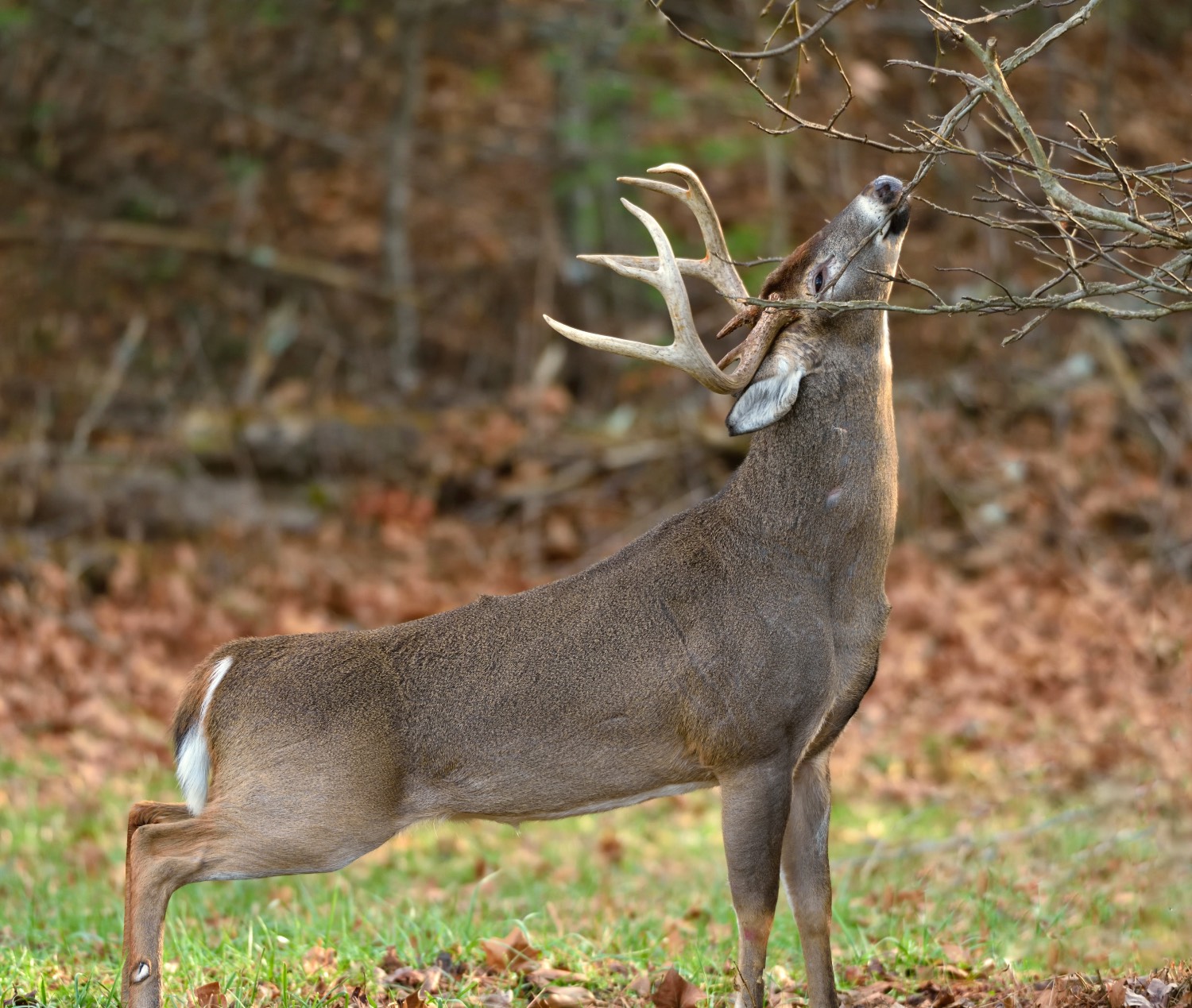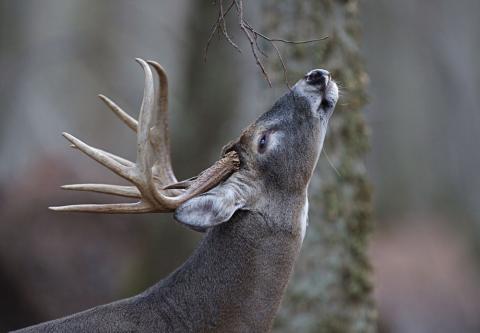
Heath Wood
The November rut, the annual breeding season for whitetail deer, is a highly anticipated time for hunters. It's when mature bucks are on the move, actively pursuing does for breeding. Traditionally, most hunters focus their efforts on the golden hours of dawn and dusk. However, a fascinating and often overlooked aspect of this period could be a game-changer for your hunting success. That aspect I am referring to is mature buck activity during the midday hours.
During my "rutcation" weekday hunting expedition, I had initially planned for an all-day sit, fully aware that the rut was in full swing. As I briefly returned to my vehicle to retrieve my lunch, I eagerly rushed back to my stand, anticipating what the afternoon might hold. Around 1:00 p.m., I was taken aback by the sheer volume of deer activity I was privileged to witness. This was, after all, a time when I'd typically be lounging at home, biding my time until the evening hunt. As the afternoon progressed, I observed an astonishing display of bucks enthusiastically pursuing does, with some locked in chases and others weaving through the timber in a desperate quest for an estrus doe. Ultimately, I found myself in the right place at the right time and harvested a mature buck. This experience provided affirmation as to why hunting is important during the rut's mid-day hours.
The intriguing phenomenon of midday buck movement in November has often been explored, searching for the reason behind their activity. Proper strategies to harness this rut behavior can often give the hunter an advantage. So, grab your gear, pack your lunch, and let's uncover the science and strategies behind hunting mature bucks in the middle of the day.
The Science Behind Midday Buck Movement
Understanding the rut and its influence on buck behavior is the first step in unraveling the mystery of midday movement. During the rut, bucks experience a surge in testosterone levels, driving them to seek out does in estrus. This heightened hormonal activity is a key factor behind their increased daytime movement and was the leading factor for being able to harvest my buck in midday.
Environmental factors also play a crucial role. As November progresses, the weather can become cooler, making the midday hours more comfortable for deer. Wind conditions can be more favorable, helping bucks move more confidently without feeling as exposed.
Scientific research supports the notion of midday buck activity. Data shows that mature bucks can be observed on the move at all hours during the rut, with midday hours often showing a spike in activity. Understanding the science behind this behavior is the foundation for successful midday hunting. All the hunter must do is fight off those mid-day naps and instead stay focused and watching. At any time, a doe may be on the move, and a buck will undoubtedly be close by.
Reasons for Midday Movement
Mature bucks are highly motivated during the rut, and their pursuit of does is the primary driving force behind the midday movement. As does enter estrus, bucks are compelled to find and breed with them, regardless of the time of day. This desire to mate can lead bucks to be active at any hour.
Competition among mature bucks further fuels midday movement. Rivalry for breeding rights can cause bucks to be on their feet during daylight hours. If a buck senses the presence of other suitors near a receptive doe, he won't waste time waiting for twilight to engage in the chase. The competitive nature amongst bucks can also make mid-day an excellent time to break out a grunt call and a rattling bag and mimic the sounds of two bucks going at it while battling to see who gets the doe first.
Hunters play a role in daytime buck movement, too. Increased hunting pressure and activity can cause deer to alter their routines. Bucks may become more nocturnal, but this doesn't mean they won't move during the day. In fact, they often do so when hunters have decided to take a break from hunting and leave their post. It is almost as if deer know when a hunter has left the area.
Natural factors, such as food sources and bedding areas, influence midday buck movement. If you can pinpoint these critical areas and understand their importance to the deer's daily routine, you can increase your odds of catching a buck on the move during the middle of the day.
Strategies for Hunting Midday Bucks
Now that we understand why mature bucks move during the day, let's discuss how to capitalize on this behavior.
All-Day Sits: Being in your stand all day is vital during the rut. Don't miss out on those midday opportunities. Pack your lunch or take a quick break as I did on my hunt, then rush to get back. Bringing a supply of water is also essential when sitting for long hours in one stand.
High-Traffic Areas: Identify travel routes, funnels, and other areas with high deer activity. These are the places where you're most likely to encounter a buck during the day.
Stand Placement: Choose stand locations that offer good visibility and cover. Bucks are more likely to be on the move if they feel safe. A higher tower stand, or hang-on stand works excellent when positioned at the edge of a food source and thicker bedding areas.
Stay Alert: Midday hunting can be mentally challenging. Stay focused, keep your eyes peeled, and be ready for action. If needed, take a thermos of coffee or, as I have recently experienced, a Mtn Ops Ignite energy drink to help keep you alert and focused throughout the whole hunt.
Midday buck movement during the November rut is a fascinating and promising opportunity for hunters. Understanding the science and motivations behind this behavior and implementing the right strategies can significantly increase your chances of encountering a mature buck during daylight hours. So, pack your lunch, stay in the stand, and unlock the secrets of midday buck movement. Your next big buck might be just around the corner.































